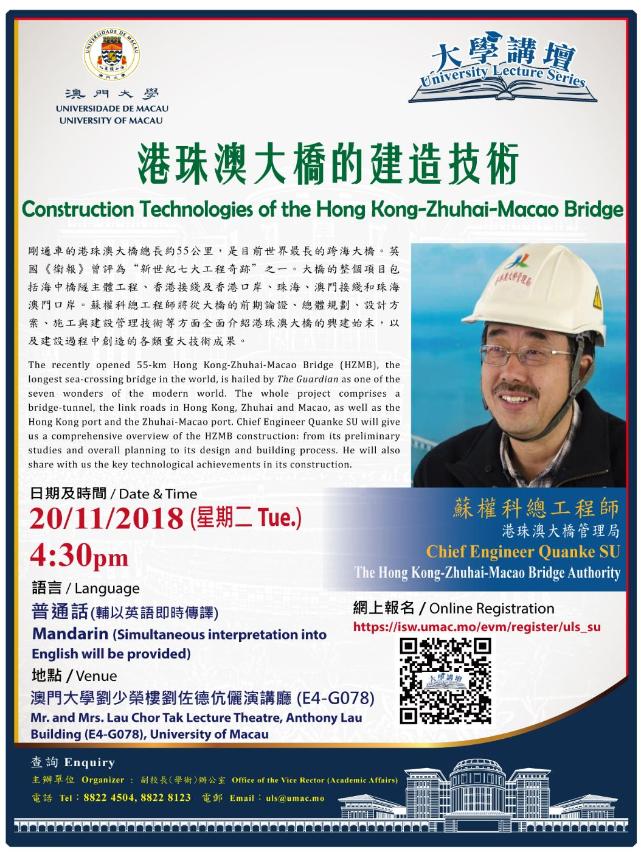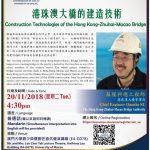 Su Quanki will give a talk at UM on the technologies adopted in constructing the Hong Kong-Zhuhai-Macao Bridg
Su Quanki will give a talk at UM on the technologies adopted in constructing the Hong Kong-Zhuhai-Macao Bridg
The University of Macau (UM) on 20 November (next Tuesday) will hold a talk titled ‘Construction Technologies of the Hong Kong-Zhuhai-Macao Bridge’ as part of the University Lecture Series. Su Quanke, chief engineer of the Hong Kong-Zhuhai-Macao Bridge Authority, will be the keynote speaker. All are welcome.
The recently opened 55-km Hong Kong-Zhuhai-Macao Bridge (HZMB), the longest sea bridge in the world, is hailed by the Guardian as one of the seven wonders of the modern world. The project comprises a bridge tunnel, the link roads in Hong Kong, Zhuhai and Macao, as well as the Hong Kong port and the Zhuhai-Macao port. During the talk, Su will give the audience a comprehensive overview of the bridge: from its preliminary studies and overall planning to its design and construction. He will also share the key technological achievements in the construction process.
Su hasmanyyears of experience inthesurvey, design, scientific research, and technical management of roads and bridges. Since 2004, he has beenin charge ofthe technological aspect oftheHZMB construction.Some of the approaches he used and advocated, such as a demand-oriented design and the assembly of large-scale and prefabricated components, have been widely recognised and adopted in industry.
The talk will start at 4:30pm in the Mr & Mrs Lau Chor Tak Lecture Theatre, Anthony Lau Building (E4-G078). It will be conducted in Mandarin, with simultaneous interpretation into English. For registration please visit https://isw.umac.mo/evm/register/uls_su. For enquiries, please call 8822 4504.


